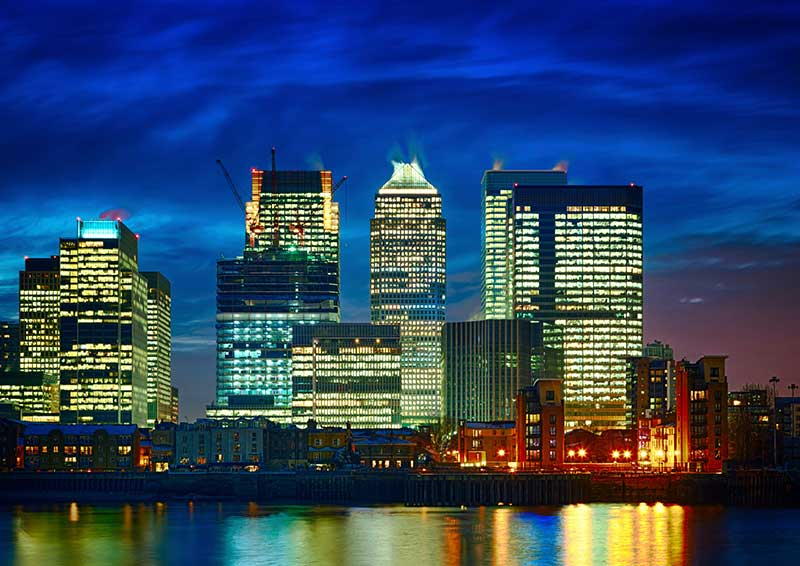Connecting people and places
There’s a lot of chatter about smart cities – but what makes a smart city, where do you start, and what if you’re not a city?
'Smart cities' has become a byword for investing in and embedding technology, but it’s much, much more than a future-proof IT system, cloud computing and a strong internet connection (although these are, of course, essential). The concept of a smart city, campus, precinct or place is about connecting people with the environment around them to improve outcomes, and to improve quality of life.
It applies just as much in rural areas as it does in conurbations, albeit that the aforementioned essentials may be in place, easier to install or at least more cost-effectively implemented in a built-up area with lots of potential users (humans/customers). However, you have to ask the ‘why’ question, at which point it all opens up.
So, why make a place smart and connected?
Well, because connecting people and places can do several things:
- Improve services (for people).
- Reduce impacts (on the environment, on society, on people).
- Reduce cost of delivery (for taxpayers, for customers, for society).
It improves the outcome. It improves quality of life. And it pays back in spades.
Taking healthcare as an example, by connecting with a patient recovering from an operation at home (where it is proven that speed of recovering increases and the risk of secondary infections decreases), healthcare support and services can be highly targeted. Getting people back to health quicker has huge benefits across society, so it makes sense to connect with people in their homes.
This means you have to connect homes, buildings, services and ‘things’. Which means investment. And front-loaded investment at that. Which cuts across current delivery, responsibility and accountability silos. Why? To improve services, reduce impacts and reduce the cost of delivery. To improve the outcome.
At the moment, this all looks like ‘cost’ – but if the benefits of connecting people and places can be set out clearly, with £££s spent and saved presented, in many cases the investment is a very small price to pay.
The government’s new Civil Society Strategy is well worth a read, complementing the 2012 Social Value Act and setting out the case for ensuring investments in major projects deliver wider societal benefit.
The strategy states: 'The government’s vision is for the principles of the Social Value Act to be applied to the whole of government spending and decision-making. Central government departments will be expected to apply the terms of the Social Value Act to goods and works as well as services. They will also be expected to ‘account for’ the social value of new procurements, rather than just ‘consider’ it as currently. The Department for Digital, Culture, Media and Sport will lead the way by applying this wider remit of the Social Value Act to major projects. Other departments will follow in due course.'
It goes on to note that the government will also look into the potential for the use of social value in grants as well as contracts, and explore the how it should be applied to other areas of public decision-making such as planning and community asset transfer.
Which all makes for very interesting reading – and worthy of further exploration which is exactly what we will be doing at the BRE Connected Cities Convention on 27 and 28 November 2018.
We will be exploring how digital technologies can help rural economies, towns and cities deliver services more cost effectively, improving the planning, design and delivery of transport, infrastructure and buildings to create healthier, sustainable, resilient and prosperous places.
This article was originally published here on 5 Sept 2018 by BRE Buzz. It was written by John Twitchen.
--BRE Buzz
[edit] Find out more
[edit] Related articles on Designing Buildings Wiki
Featured articles and news
ECA progress on Welsh Recharging Electrical Skills Charter
Working hard to make progress on the ‘asks’ of the Recharging Electrical Skills Charter at the Senedd in Wales.
A brief history from 1890s to 2020s.
CIOB and CORBON combine forces
To elevate professional standards in Nigeria’s construction industry.
Amendment to the GB Energy Bill welcomed by ECA
Move prevents nationally-owned energy company from investing in solar panels produced by modern slavery.
Gregor Harvie argues that AI is state-sanctioned theft of IP.
Heat pumps, vehicle chargers and heating appliances must be sold with smart functionality.
Experimental AI housing target help for councils
Experimental AI could help councils meet housing targets by digitising records.
New-style degrees set for reformed ARB accreditation
Following the ARB Tomorrow's Architects competency outcomes for Architects.
BSRIA Occupant Wellbeing survey BOW
Occupant satisfaction and wellbeing tool inc. physical environment, indoor facilities, functionality and accessibility.
Preserving, waterproofing and decorating buildings.
Many resources for visitors aswell as new features for members.
Using technology to empower communities
The Community data platform; capturing the DNA of a place and fostering participation, for better design.
Heat pump and wind turbine sound calculations for PDRs
MCS publish updated sound calculation standards for permitted development installations.
Homes England creates largest housing-led site in the North
Successful, 34 hectare land acquisition with the residential allocation now completed.
Scottish apprenticeship training proposals
General support although better accountability and transparency is sought.
The history of building regulations
A story of belated action in response to crisis.
Moisture, fire safety and emerging trends in living walls
How wet is your wall?
Current policy explained and newly published consultation by the UK and Welsh Governments.
British architecture 1919–39. Book review.
Conservation of listed prefabs in Moseley.
Energy industry calls for urgent reform.





























